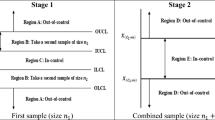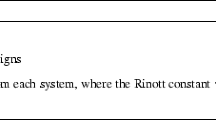The Markov chain random field (MCRF) theory provided the theoretical foundation for a nonlinear Markov chain geostatistics. In a MCRF, the single Markov chain is also called a “spatial Markov chain” (SMC). This paper introduces an efficient fixed-path SMC algorithm for conditional simulation of discrete spatial variables (i.e., multinomial classes) on point samples with incorporation of interclass dependencies. The algorithm considers four nearest known neighbors in orthogonal directions. Transiograms are estimated from samples and are model-fitted to provide parameter input to the simulation algorithm. Results from a simulation example show that this efficient method can effectively capture the spatial patterns of the target variable and fairly generate all classes. Because of the incorporation of interclass dependencies in the simulation algorithm, simulated realizations are relatively imitative of each other in patterns. Large-scale patterns are well produced in realizations. Spatial uncertainty is visualized as occurrence probability maps, and transition zones between classes are demonstrated by maximum occurrence probability maps. Transiogram analysis shows that the algorithm can reproduce the spatial structure of multinomial classes described by transiograms with some ergodic fluctuations. A special characteristic of the method is that when simulation is conditioned on a number of sample points, simulated transiograms have the tendency to follow the experimental ones, which implies that conditioning sample data play a crucial role in determining spatial patterns of multinomial classes. The efficient algorithm may provide a powerful tool for large-scale structure simulation and spatial uncertainty analysis of discrete spatial variables.
Similar content being viewed by others
References
Abend, K., Harley, T. J., and Kanal, L. N., 1965, Classification of binary random patterns: IEEE Trans. Info. Theory, v. 11, no. 4, p. 538–544.
Besag, J., 1986, On the statistical analysis of dirty pictures (with discussions): J. Royal Stat. Soc., Ser. B, v. 48, no. 3, p. 259–302.
Carle, S. F., and Fogg, G. E., 1996, Transition probability-based indicator geostatistics: Math. Geol., v. 28, no. 4, p. 453–477.
Carle, S. F., and Fogg, G. E., 1997, Modeling spatial variability with one- and multi-dimensional continuous Markov chains: Math. Geol., v. 29, no. 7, p. 891–918.
Deutsch, C. V., and Journel, A. G., 1998, GSLIB: Geostatistical software library and user&s guide 2nd ed.: Oxford University Press, New York, 369 p.
Elfeki, A. M., and Dekking, F. M., 2001, A Markov chain model for subsurface characterization: Theory and applications: Math. Geol., v. 33, no. 5, p. 569–589.
Geman, S., and Geman, D., 1984, Stochastic relaxation, Gibbs distributions, and the Bayesian restoration of images: IEEE Trans. Pattern Analy. Mach. Intell., v. 6, no. 6, p. 721–741.
Goovaerts, P., 1997, Geostatistics for natural resources evaluation: Oxford University Press, New York, 483 p.
Koltermann, E. C., and Gorelick, S. M., 1996, Heterogeneity in sedimentary deposits: A review of structure-imitating, process-imitating, and descriptive approaches: Water Resour. Res., v. 32, no. 9, p. 2617–2658.
Krumbein, W. C., 1968, FORTRAN IV computer program for simulation of transgression and regression with continuous time Markov models: Computer Contribution 26, Kansas, Geol. Surv., 38 p.
Li, W., 2006a, Markov chain random fields for estimation of categorical variables: Math. Geol., v. 39, no. 3.
Li, W., 2006b, Transiogram: A spatial relationship measure for categorical data: Inter. J. Geog. Info. Sci., v. 20, no. 6, p. 693–699.
Li, W., Li, B., and Shi, Y., 1999, Markov-chain simulation of soil textural profiles: Geoderma, v. 92, no. 1, p. 37–53.
Li, W., Li, B., Shi, Y., and Tang, D., 1997, Application of the Markov-chain theory to describe spatial distribution of textural layers: Soil Sci., v. 162, no. 9, p. 672–683.
Li, W., Zhang, C., Burt, J. E., Zhu, A. X., and Feyen, J., 2004, Two-dimensional Markov chain simulation of soil type spatial distribution: Soil Sci. Soc. Am. J., v. 68, no. 5, p. 1479–1490.
Lin, C., and Harbaugh, J. W., 1984, Graphic display of two- and three-dimensional Markov computer models in geology: Van Nostrand Reinhold Company, New York, 180 p.
Ma, Y. Z., and Jones, T. A., 2001, Teacher&s aide: Modeling hole-effect variograms of lithology-indicator variables: Math. Geol., v. 33, no. 5, p. 631–648.
Norberg, T., Rosen, L., Baran, A., and Baran, S., 2002, On modeling discrete geological structure as Markov random fields: Math. Geol., v. 34, no. 1, p. 63–77.
Pickard, D. K., 1980, Unilateral Markov fields: Adv. Appl. Probab., v. 12, no. 3, p. 655–671.
Potter, P. E., and Blakely, R. F., 1967, Generation of a synthetic vertical profile of a fluvial sandstone body: J. Soc. Petr. Eng. AIME, v. 7, no. 3, p. 243–251.
Qian, W., and Titterington, D. M., 1991, Multidimensional Markov chain models for image textures: J. Royal Stat. Soc, Ser. B, v. 53, no. 3, p. 661–674.
Ritzi, R. W., 2000, Behavior of indicator variograms and transition probabilities in relation to the variance in lengths of hydrofacies: Water Resour. Res., v. 36, no. 11, p. 3375–3381.
Sharp, W. E., and Aroian, L. A., 1985, The generation of multidimensional autoregressive series by the herringbone method: Math. Geol., v. 17, no. 1, p. 67–79.
Tjelmeland, H., and Besag, J., 1998, Markov Random fields with higher-order interactions: Scand. J. Statist. v. 25, no. 3, p. 415–433.
Weissmann, G. S., and Fogg, G. E., 1999, Multi-scale alluvial fan heterogeneity modeled with transition probability geostatistics in a sequence stratigraphic framework: J. Hydrol., v. 226, no. 1, p. 48–65.
Wu, K., Nunan, N., Crawford, J. W., Young, I. M., and Ritz, K., 2004, An efficient Markov chain model for the simulation of heterogeneous soil structure: Soil Sci. Soc. Am. J., v. 68, no. 2, p. 346–351.
Zhang, C., and Li, W., 2005, Markov chain modeling of multinomial land-cover classes: GIScience Remote Sens., v. 42, no. 1, p. 1–18.
Author information
Authors and Affiliations
Corresponding author
Rights and permissions
About this article
Cite this article
Li, W. A Fixed-Path Markov Chain Algorithm for Conditional Simulation of Discrete Spatial Variables. Math Geol 39, 159–176 (2007). https://doi.org/10.1007/s11004-006-9071-7
Received:
Accepted:
Published:
Issue Date:
DOI: https://doi.org/10.1007/s11004-006-9071-7




